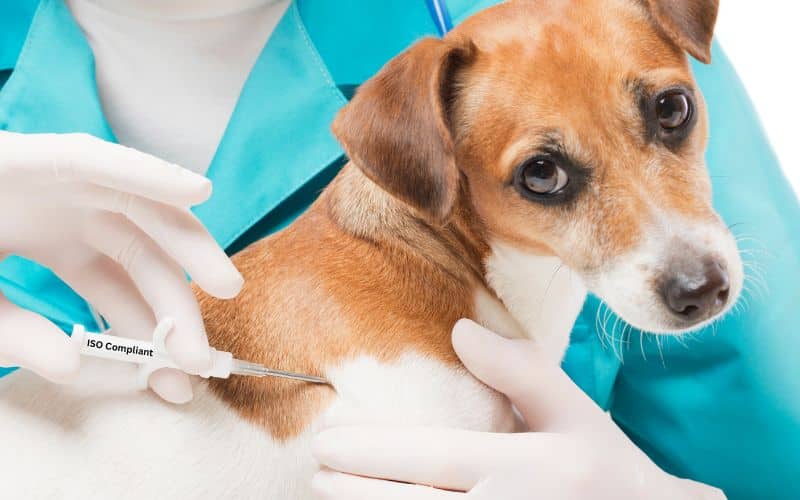ISO Microchips for Cat & Dog Relocation
Moving to a new country with your furry friends can be stressful enough without having to worry about paperwork and regulations. One essential document for relocating internationally with pets is an ISO microchip – a small device implanted under your cat or dog’s skin that contains identification details. While microchipping is mandatory in many countries, standards vary, which could cause problems at border control if your pet’s chip is non-ISO compliant. Don’t leave microchipping to the last minute as you prepare for your upcoming move.
This blog post covers everything you need to get ISO-standard microchips for your pets to simplify the relocation process. We’ll overview the differences between ISO and non-ISO microchips, international standards and regulations, how to check if your pet’s existing chip is ISO-compliant, and what information the microchip should contain.
What is a pet Microchip?
A microchip is a small electronic chip wrapped in a glass cylinder that is about the size of a grain of rice. It’s implanted under pets’ skin. The microchip has a special code that can be scanned to show the pet’s ID. If a pet with a microchip gets lost and is found, the vet or animal shelter can scan it. This allows them to get the owner’s contact information to reunite the lost pet with its family.
What is an ISO Microchip?
ISO microchips are unique or different in that they are 15 digits long. This means that ISO microchips follow specific rules to be scanned and read globally. For example, veterinarians and animal shelters worldwide have scanners that can read ISO microchips. These chips are all the same size as other chips, like a large grain of rice. Usually, they are implanted in a syringe and needle by a veterinarian, although the AVID chips are also implanted by AFCD lay staff, where necessary, e.g., at HKIA Hong Kong Airport.
An ISO microchip lasts for the pet’s lifetime. All kinds of pets – dogs, cats, birds, horses, and more- can get ISO-compatible microchips. Putting an ISO microchip in a pet is an easy way to help make sure they can always be identified.
Is an ISO-compliant microchip different from other microchips?
All dogs in Hong Kong require AVID 9 digit chips as part of Hong Kong’s Dog Licence rules and regulations as a matter of trying to prevent and exclude Rabies disease from the country. Some countries require ISO chips, others require iso-compatable chips. Some countries are satisfied with any microchip. Chip type depends on the country requirements.
Importance of ISO microchip
ISO Microchipping is a crucial aspect of responsible pet ownership, offering numerous benefits that ensure the safety and well-being of your furry friends:
- Global ID
ISO chips can be scanned and understood by vets and shelters everywhere in the world. This helps lost pets be identified no matter where they are.
- Reuniting Pets
ISO chips make it much easier for shelters to contact owners and reunite lost pets with their families.
- Lifetime Code
An ISO chip’s unique code never changes and can always identify a pet, even years later.
- Mandatory
In the EU and several non-EU countries, ISO microchipping is mandatory for pet identification and proof of ownership.
What is all the fuss about?
Worldwide pet identification. Pets flying around the world need to be identifiable for biosecurity. This means measures designed to protect the humans population against harmful biological or biochemical substances.
Your dog or cat’s health, what country you live, and the places you travel with your pet, all could cause biosecurity incidents, such as disease outbreaks. Don’t forget Rabies still is transmissible to people from pets, and Children in Africa and India etc die from it each year, as well as thousands of stray dogs and cats.
What If My Pet Doesn’t Have an ISO-Compatible Microchip?
Getting your pet an ISO microchip is essential. But you may have a pet without one. Or your pet may have an older chip that shelters can’t always read. There are some things you can do. First, have your vet check your pet for any microchip that is there now. They can see if your pet already has an older chip. If they find one, the vet can register it and add your details to databases. But the problem is that old chips can’t always be read right by scanners everywhere.
That’s why you may also want a new ISO microchip implanted in your pet. You don’t need two chips. But a second ISO chip ensures you have backup contact info. This raises the chance you will get your pet back if they are ever lost.
What is an ISO Microchip used for in pet relocation?
The ISO microchips are the most recognized internationally. The chip is essential for moving a pet to a new country. The tiny chip helps identify pets who get lost or taken away when moving between countries. The ISO chip has a code that any vet or animal shelter can scan. With an ISO chip, finding and getting a lost pet back home is very hard. With an ISO chip, the people who find the pet can scan it, call the owner, and work to send the pet home. This protects pets in case something terrible happens during the complex relocation process.
As they are only used in Asia for relocation rather than as part of our National Requirements, not all Hong Kong Clinics stock these ISO-compatible microchips.
Please feel free to contact the Ferndale Kennels team so we can recommend where you are able to find a veterinarian to implant these.
Of prime importance is their need for their usage for Singapore, and for the EU European Union countries.
Does It Hurt to Implant an Iso Microchip in a Dog or Cat?
Normally no, as long as the pet stays still and the veterinarian implants it in the correct place under the skin.
Can ISO microchips fail?
It’s rare but very occasionally ISO microchips can fail and then can’t be detected by a microchip scanner. This can be due to chip malfunction, or the microchip to move out of place. For example, your pet’s microchip could migrate down your dog’s body from activity, over time, or other factors.
Where can I get an ISO microchip locally?
Give us a call at Ferndale on +852 2791 9330 in office hours, or email [email protected] and we can tell you where you can get one for your pet, as well as let you know if its required.
Apart from Pet’s Microchipping, Ferndale can help with pets flying anywhere around the world.
Check Out: How to Find Dog’s Microchip Number
Conclusion
When relocating treasured family pets overseas, proper identification is essential for their safety and well-being. As pet relocation experts trusted by families worldwide, we have seen firsthand how critical ISO microchip identification is for smooth international travel. With standardized coding recognizable by veterinarians, shelters, and scanners globally, ISO microchips dramatically increase the possibility of reuniting lost pets with their owners.
Some places might need this kind of chip for entry, and it’s easier to find scanners that read these chips almost everywhere. To avoid any trouble while traveling or if your pet gets lost in a new place, consider changing your pet’s microchip to one that meets these global rules.
Click Here For ISO Microchipping costs and Travel quote
Frequently Asked Questions
What exactly is an ISO microchip?
An ISO microchip is a small chip, about the size of a grain of rice, that is implanted underneath the skin of a dog, cat, or other animal. It contains a unique identification number that can be read by scanners worldwide.
How does an ISO microchip help relocate pets?
If a relocated pet gets lost or separated during transit, a vet or shelter worldwide can scan the chip and contact the registered owner to arrange reunification with the family, even if they are thousands of miles away in a different country.
Is an ISO microchip painful or harmful to my pet?
No. The microchip is implanted with a needle and a slight pinch, similar to a routine shot for the pet.
What should I do once my pet is implanted with the chip?
Register your contact information in major pet recovery databases associated with the microchip. This links your details to the unique chip ID in case your pet ever needs identification. Some chips come pre-registered but double-check with your vet to be safe.
Are there any specific countries or regions that require pets to have an ISO microchip for entry?
All the pets entering EU countries, the UK, Australia, and New Zealand must be implanted with a working ISO microchip. A veterinarian must implant the microchip and be compliant with ISO 11784/11785.




